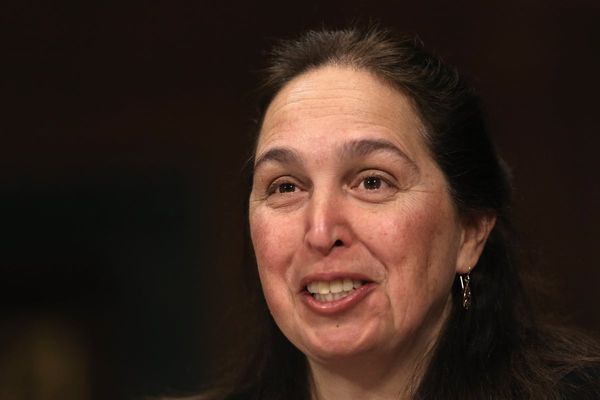
SCOTTSDALE, Ariz. — Lee Iacocca, the iconic former president of the Ford Motor Company, once said that executives are often presented with great opportunities brilliantly disguised as insoluble problems, the kind of homespun aphorism you’d expect from a man who only had to navigate challenges like exploding Pintos rather than the mercurial demands of PGA Tour stars.
The quest to find opportunity amid insoluble problems has been turning Jay Monahan’s altar-boy coif from silver to white as he tries to shape the PGA Tour schedule – designated events and not – around constituencies that are always competing but not always convivial.
Like the Goliaths, who understand the competitive need for Davids but who aren’t eager to share too much of the pot with them. And the Davids, who dominate a member-led organization. And sponsors, who object to the perception of a tournament caste system if theirs isn’t among the chosen. And tournament operators, whose financial benchmarks aren’t as flexible as the whims of Tour players.
The interests of all of the aforementioned factions collide at one intersection: field sizes at designated Tour events. Or more specifically, the reduction thereof.
The reality of the ongoing reshaping of the PGA Tour is that greater riches for the elite will invariably come at the expense of the sackcloth contingent, the not-so-silent majority who don’t sell tickets, don’t draw eyeballs and don’t make a bad living. This week’s WM Phoenix Open is a fertile example of the challenges looming with the new designated events.
Put simply, who and how many should be allowed to play?
There are 135 golfers in the field at TPC Scottsdale, including 18 of the world’s top 20. As with most full-field events, scrolling the exemption criteria tends to dilute the perception of an elite meritocracy at work. For example, the local PGA section’s player of the year is competing, a common if parochial tradition on Tour. Fair enough. A horse race is no less exciting for the presence of an ultimate long shot. But an opaque category sure to come under pressure in the new realm of designated events is sponsor exemptions, the system of invitations by which those who pay the bills can reward rising talent or favored partners of their choosing.
Sponsors are, and should be, given tremendous latitude in deciding how their exemptions are used, and at the Phoenix Open WM’s are the customary mix of the welcome, the defensible and the bewildering. Taylor Montgomery is wholly deserving, a rookie making inroads early in his career. So too Davis Thompson, who recently ran Jon Rahm close in Palm Springs (though he withdrew from last week’s AT&T Pebble Beach Pro-Am after being handed a spot this week, depriving a needier, undesignated tournament of his presence). The other sponsor freebies are considerably more debatable, moreso since the event is billed as a showdown of the elite.
One went to Charley Hoffman, not for his performance – just one top-20 finish in almost two years – but by dint of his commercial relationship with WM. Another was bestowed on J.B. Holmes, the world No. 1,815 who has made the weekend in just five of his last 20 starts, dating back to 2020. He’s at least a two-time winner here, so one can forgive a compassionate sentimentality on the sponsor’s part. The last went to Ricky Barnes, for no obvious reason other than that he lives locally.
Spectators, viewers and fellow competitors might wonder if the WM Phoenix Open is truly an elite field when Barnes ambles to the tee having never won, being a dozen years removed from last qualifying for a major championship and with a current ranking of 1,669. His presence proves that designated events cannot be “full-field.” The elite status of a tournament is defined not just by the caliber of player it attracts, but by those left outside looking in.
Since “designated” status was a late addition to the 2023 schedule, the Tour announced that field sizes at elevated stops would remain unchanged. That will not be the case in ’24, and the winnowing of that number is one of the more contentious and complicated issues Monahan must tackle.
The objective of designated events isn’t only to bring the best players together more often – that’s the consumer-facing rationale – but to ensure they’re paid more. That means dividing the $20 million purses among fewer pockets. It also means paying top talent, even if they miss the cut. Both concepts are under discussion for designated events next year. Try selling journeymen on the idea that they’ll have fewer playing opportunities while top tier guys make bank even if they can’t play well enough to make the weekend.
Numerous insiders say that top players initially suggested field sizes for designated events be capped at 70 but the actual number next year is likely to be around 80, something similar to the old World Golf Championships. Apply that to the traditional field at a WM Phoenix Open, and 50-odd guys would be getting an unwelcome week off work. And that’s just the visible fiscal impact of cutting field sizes. Tournament operators won’t relish a reduction either since fewer tee times throughout the day makes it tougher to meet food and beverage revenue targets. This is trickle-down economics in action.
The radical changes coming to the PGA Tour schedule are intended to guarantee the product to sponsors, broadcasters and fans while rewarding stars who drive business. It’s tough to balance that ambition against the Tour’s longstanding and painfully democratic mandate to simply provide playing opportunities to members. Monahan will grasp the truth in another Iacocca maxim, that success belongs to the leader who holds onto the old only as long as it’s good, and who grabs the new just as soon as it’s better. However, persuading his competing constituencies of that will be about as easy as selling one of Iacocca’s perilous old Pintos.







